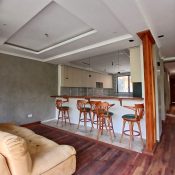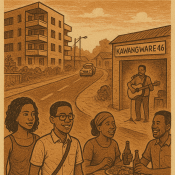Would You Live Here- Kileleshwa Edition?
Would You Live Here- Kileleshwa Edition?
This week on our Would you live Here Edition? –where we explore Nairobi and its outskirts, we bring to you Kileleshwa.
As you know, it is one of the affluent areas in Nairobi, strongly competing with Westlands and Parklands among others.
But they are pretty different, you can tell. Their architecture, the communities and overall lifestyle. But did you know that this pretty area in Nairobi has premises of which it bases its operations?
If Westlands is the Manhattan and Nairobi, I wonder which city around the world mirrors its energy.
Anyways, we will take you back to the 1920s and explore everything in correlation.
1. Early 20th Century (1900s – 1960s): Colonial Settlement & European Residence
1900s: We all know Nairobi was established as a colonial railway depot under British rule. The area that would become Kileleshwa was largely undeveloped, part of the larger Karen/Kiambu forested region.
1920s – 1940s: As Nairobi expanded, the British designated areas like Kileleshwa for European settlers. The neighborhood was part of a larger plan to create exclusive residential zones for colonial administrators and wealthy expatriates.
1950s – 1960s: For the longest time, it remained a quiet, leafy suburb with large plots and bungalows, primarily housing white settlers and civil servants.
It looked like this:
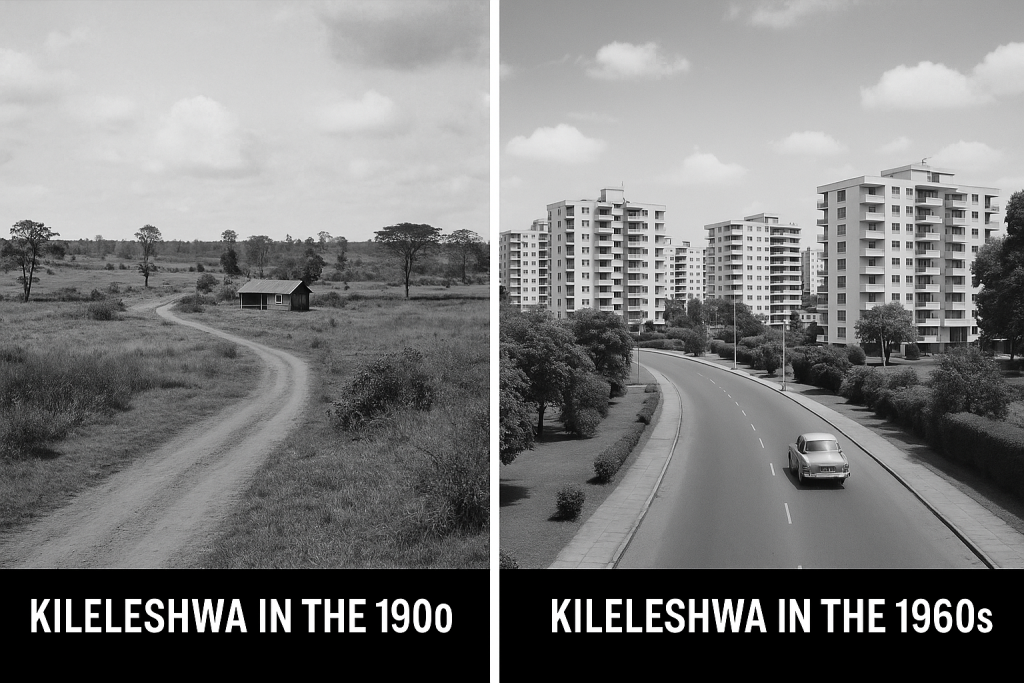
2. Post-Independence (1960s – 1980s): African Elite & Middle-Class Growth
1963: Then we gained independence, and African elites began moving into formerly European-dominated areas, including Kileleshwa. Which was a win. Though we think could have done more to ensure the integration of more Kenyans into affluency. Then things would have been different.
1970s: Then it continued to experience gradual urbanization, with wealthier Kenyans and Asian-Kenyans purchasing property. The government also allocated some land to civil servants.
1980s: Kileleshwa became a preferred residential area for middle and upper-class Nairobi residents, featuring improved infrastructure and security.
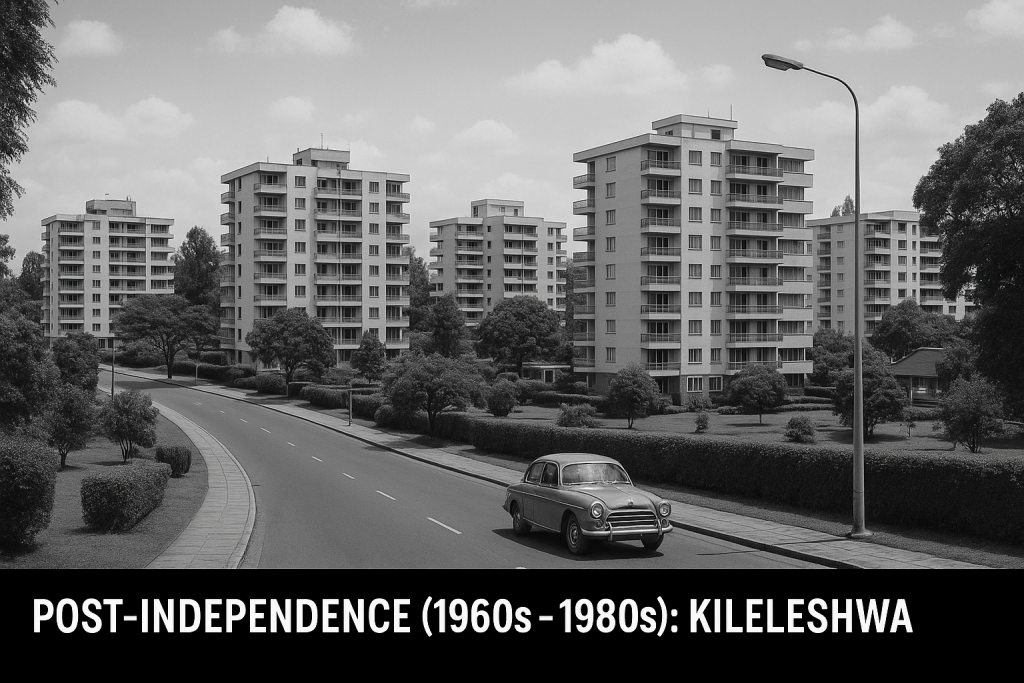
3. Rapid Urbanization (1990s – 2010s): Rise of High-End Real Estate
Then came the 90’s and We think this is where the game changed completely
1990s: Nairobi’s population boom led to increased demand for housing. And we standalone bungalows were slowly but steadily being replaced by apartment complexes and gated communities.
2000s: The area became a hotspot for diplomats, expatriates, and wealthy Kenyans. High-end malls (like Yaya Centre) and international schools (e.g., Braeburn School) boosted its appeal.
2010s: Kileleshwa experienced a construction boom, with luxury apartments, townhouses, and commercial developments. It also became a nightlife hub, with restaurants and bars attracting young professionals.
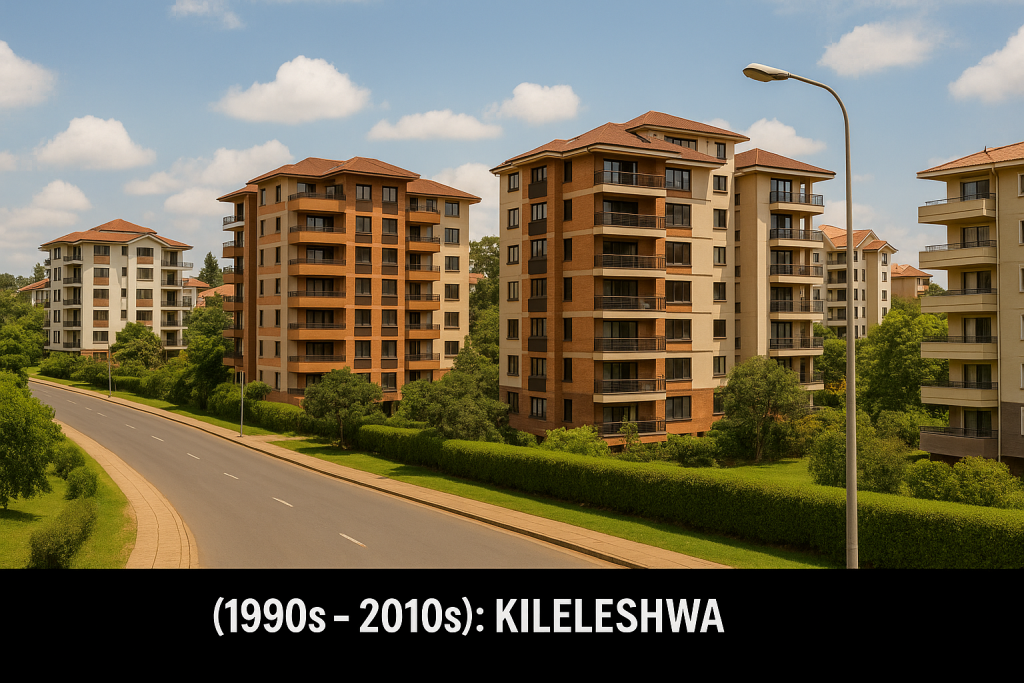
4. Modern Kileleshwa (2020 – Present): Diplomatic Hub & Luxury Living
2020s: Kileleshwa remains one of Nairobi’s most prestigious addresses, hosting embassies, tech entrepreneurs, and expatriates. Property prices have skyrocketed, making it one of the most expensive areas in the city.
2024: The neighborhood continues to evolve, with mixed-use developments (residential + commercial) and improved infrastructure, though traffic congestion remains a challenge.
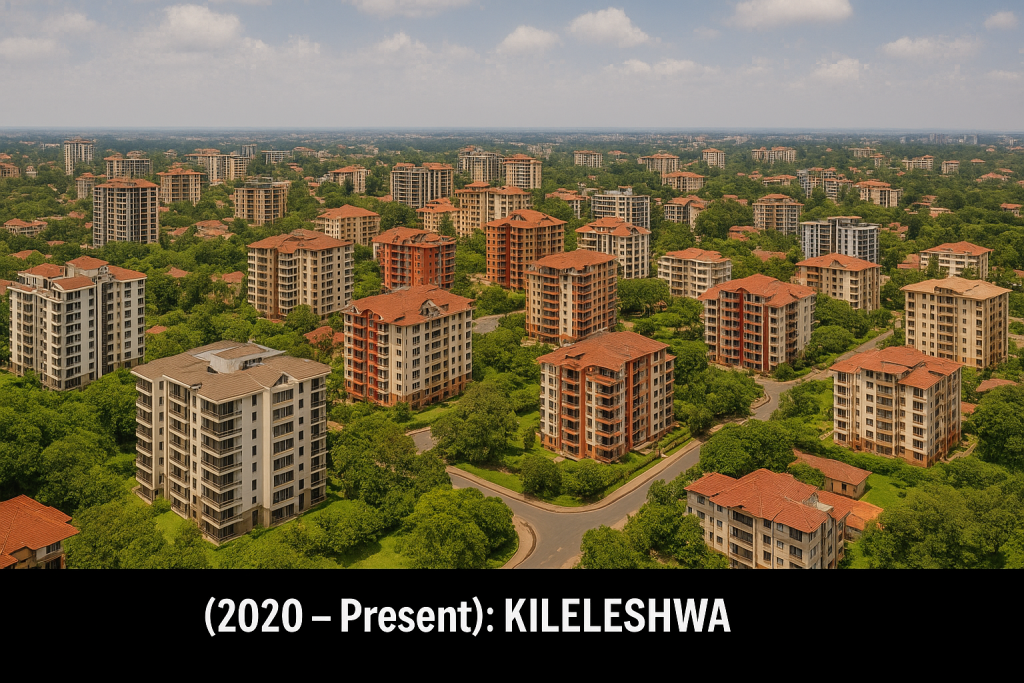
Conclusion
From a colonial-era settlement to a bustling upscale neighborhood, Kileleshwa’s history reflects Nairobi’s broader urban transformation. Today, it stands as a symbol of Kenya’s economic growth and cosmopolitan lifestyle.
You might ask, how is it different from Westlands and Parklands and after much research, the major differentiating factors are:
| Neighborhood | Primary Identity | Biggest Contrast |
| Kileleshwa | Upscale residential haven | Quiet, diplomatic, and luxury-focused—best for high-end living away from chaos. |
| Westlands | Nairobi’s secondary CBD | A bustling commercial & entertainment hub—full of offices, clubs, and traffic. |
| Parklands | Cultural & family-oriented enclave | Strong Asian-Kenyan heritage, with a slower, community-driven vibe. |
Knowing what you know now, would you live here?
That’s it from us today, join us on the next one.
Have a lovely weekend.


